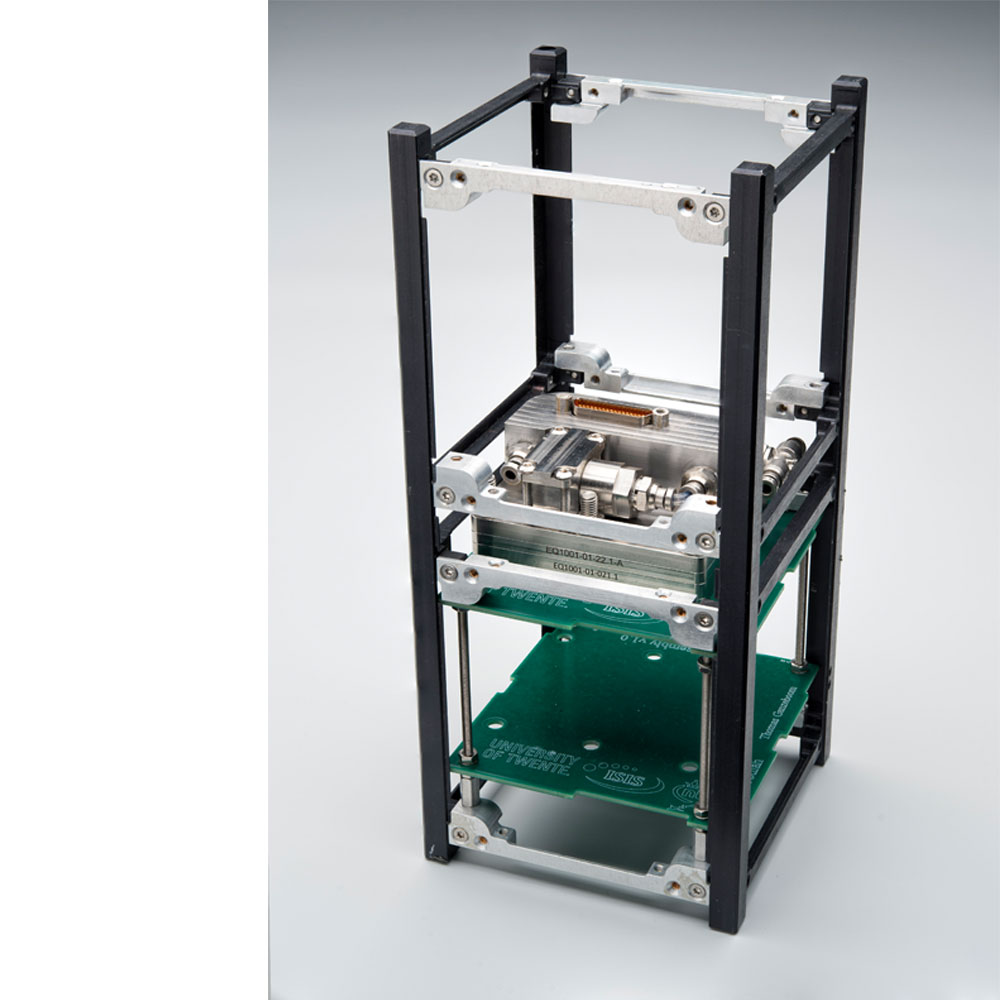cracking the glass code.
We have grown accustomed to metal and concrete…
Read MoreThe only way for space satellites to reject heat tot the environment in space is through radiation. For low power (<20 Watt) satellites a ‘simple’ passive radiator can be sufficient, but higher powers require a more advanced thermal control.
Satellites often contain on-board computers allowing sophisticated processing. The electronics produce heat that needs to be dumped into space. The increase in power dissipated in CubeSats demands a more advanced thermal control system (TCS). To integrate a TCS into a CubeSat, it needs to be low-cost, physically small, low in power consumption, and both modular and flexible. Royal NLR developed a new thermal concept as a robust solution for this: the mini mechanically-pumped loop (MPL). Alongside NLR, Demcon kryoz is now bringing this technology to the next TRL, and is preparing it for industrial production.
The sizes of small satellites (also known as nanosatellites) follow the CubeSat standard, which defines the outer dimensions of the satellite within multiple cubical units (U). 1U is equivalent to dimensions of 10x10x10cm. A typical size that can accommodate small technology payloads is a 3-unit CubeSat with dimensions of 10x10x30cm. A thermal control system becomes relevant for 3U CubeSats with large deployable solar panels, or 8U without deployable solar panels.


Dumping heat into space might seem an easy task since space is extremely cold, right? In reality this isn’t (always) the case. Besides being very cold, space can also be very hot. Moving heat away from dissipative devices inside space satellites towards space radiators is a challenging but really interesting task. It’s great to work with partners like ESA, NLR and ISIS Space to solve these issues.